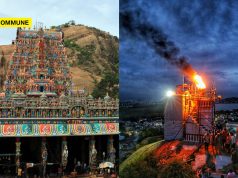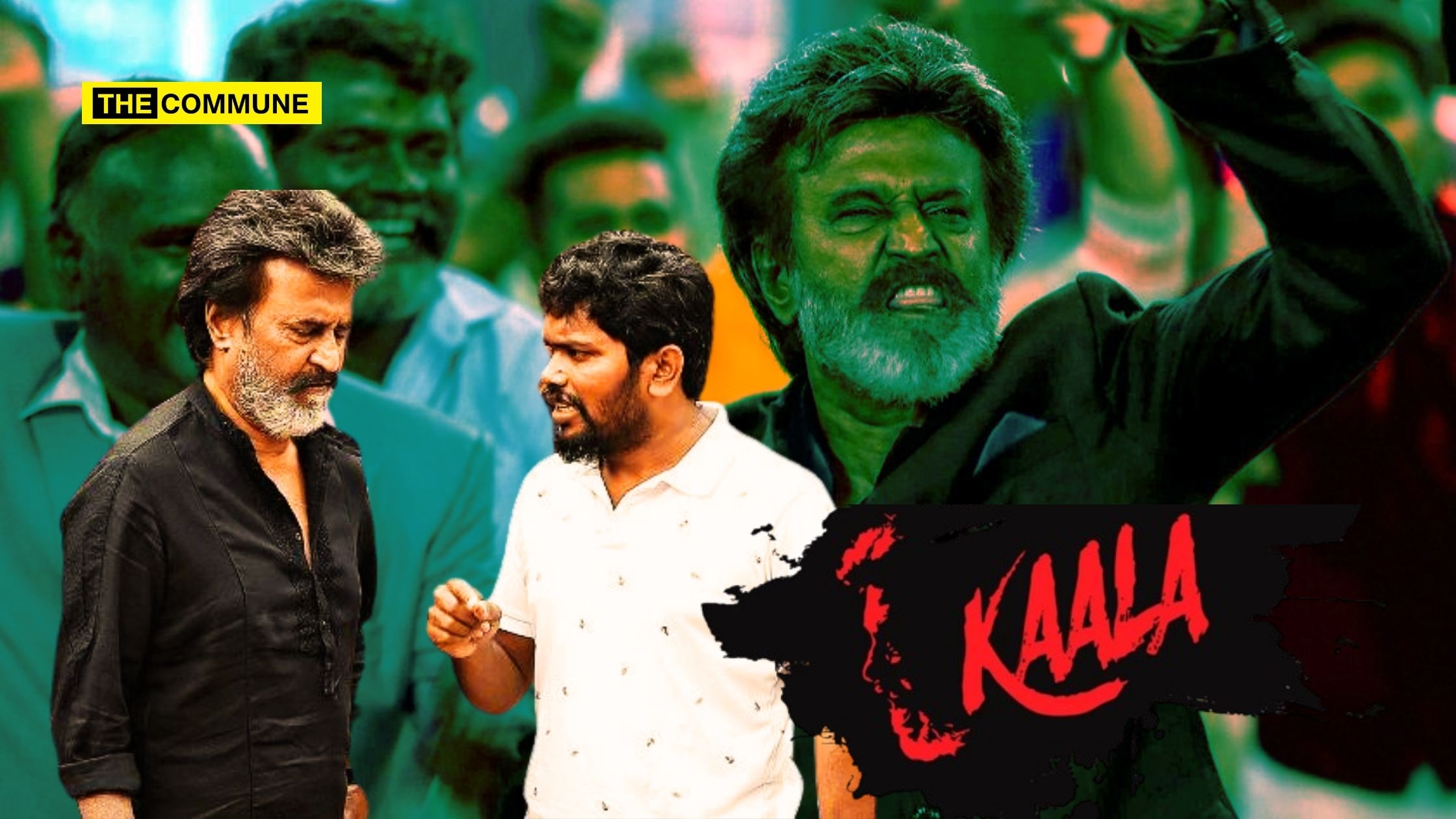
While Actor Rajinikanth may be hailed as a pious Hindu devotee off-screen, his on-screen choices raise suspicions over the authenticity of his devotion, particularly in films like Kaala (2018) by Pa Ranjith. Is Rajinikanth’s spirituality merely a carefully constructed mask designed to appeal to a broader audience?
Kaala is Ranjith’s most brazen passion project, in which his ideology is infused both brazenly and in covert subtexts. While the core plot concerns land rights for the urban poor living in Dharavi, the Rajinikanth-starring film is needlessly Hinduphobic from the start to the end.
Hidden Hindumisia of Kaala.
While batting for the land rights of slum dwellers of Dharavi is noble, Ranjith uses this theme in Kaala to spread his misguided Hinduphobic ideology and politics. For instance, the film respects pork as haram but normalizes eating beef.
See the shop name, which is just opposite Kaala’s house. Kaala’s wife openly states that she’d feed her husband beef but looks down upon her son, who is a “vegetarian”.
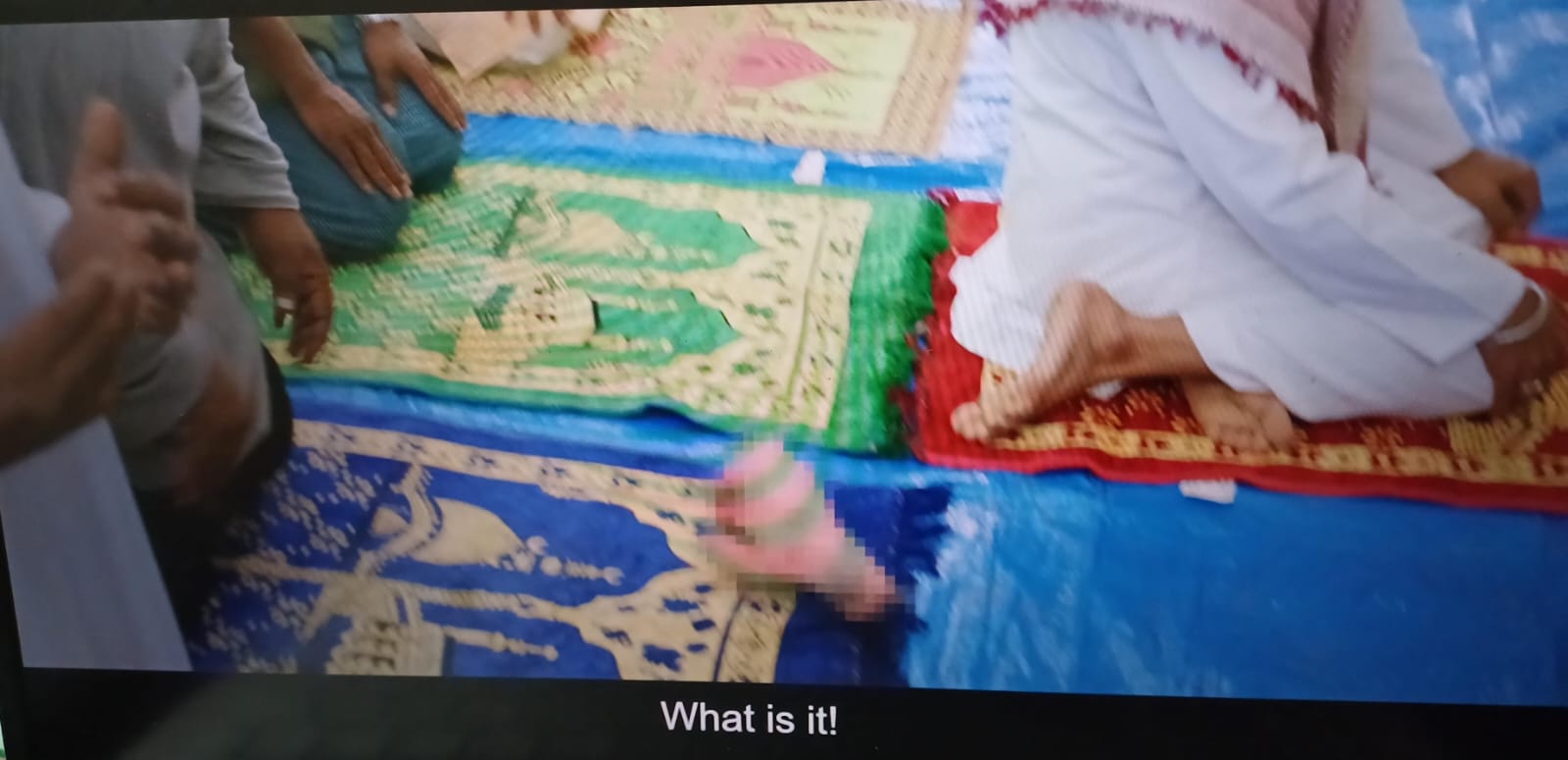
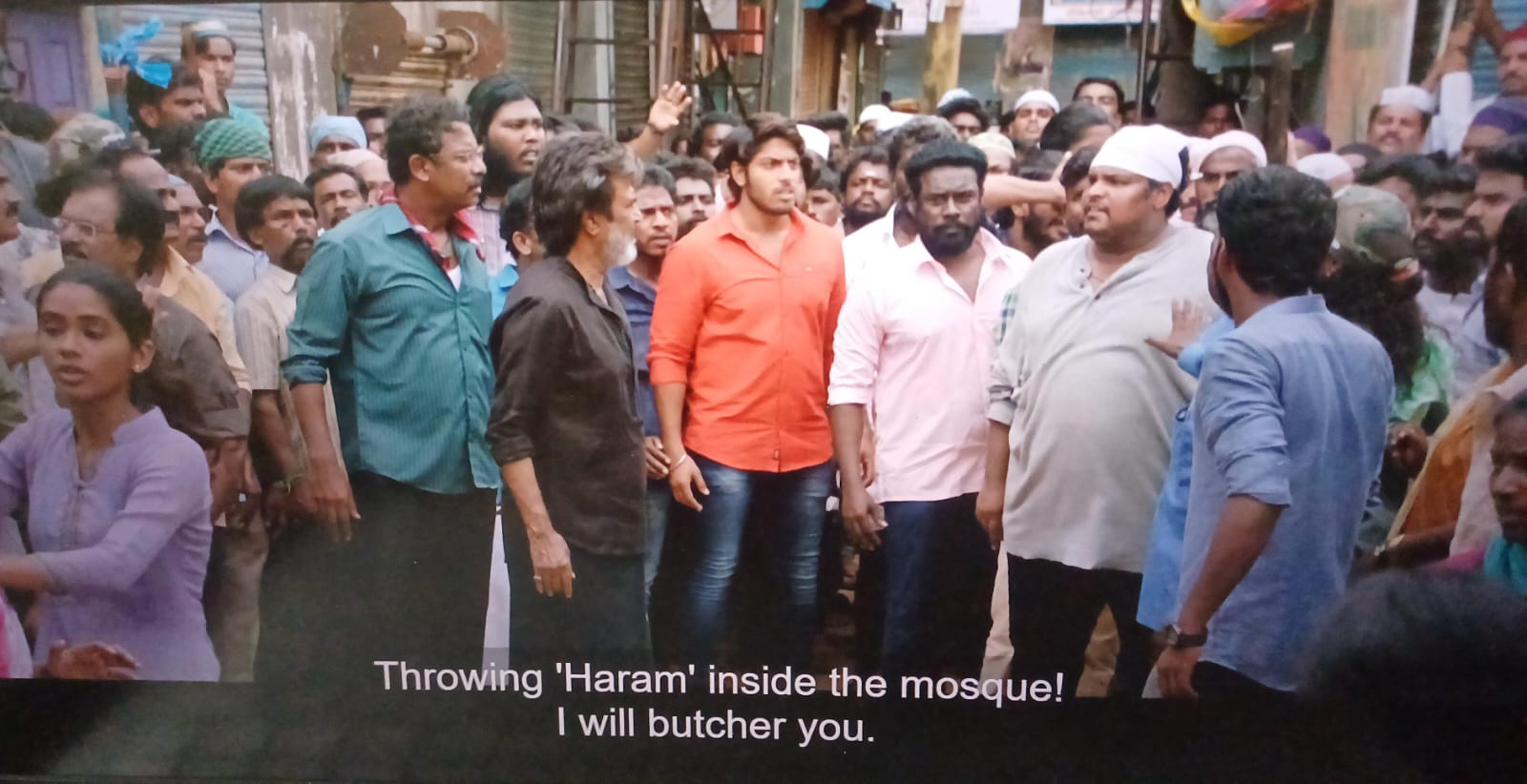
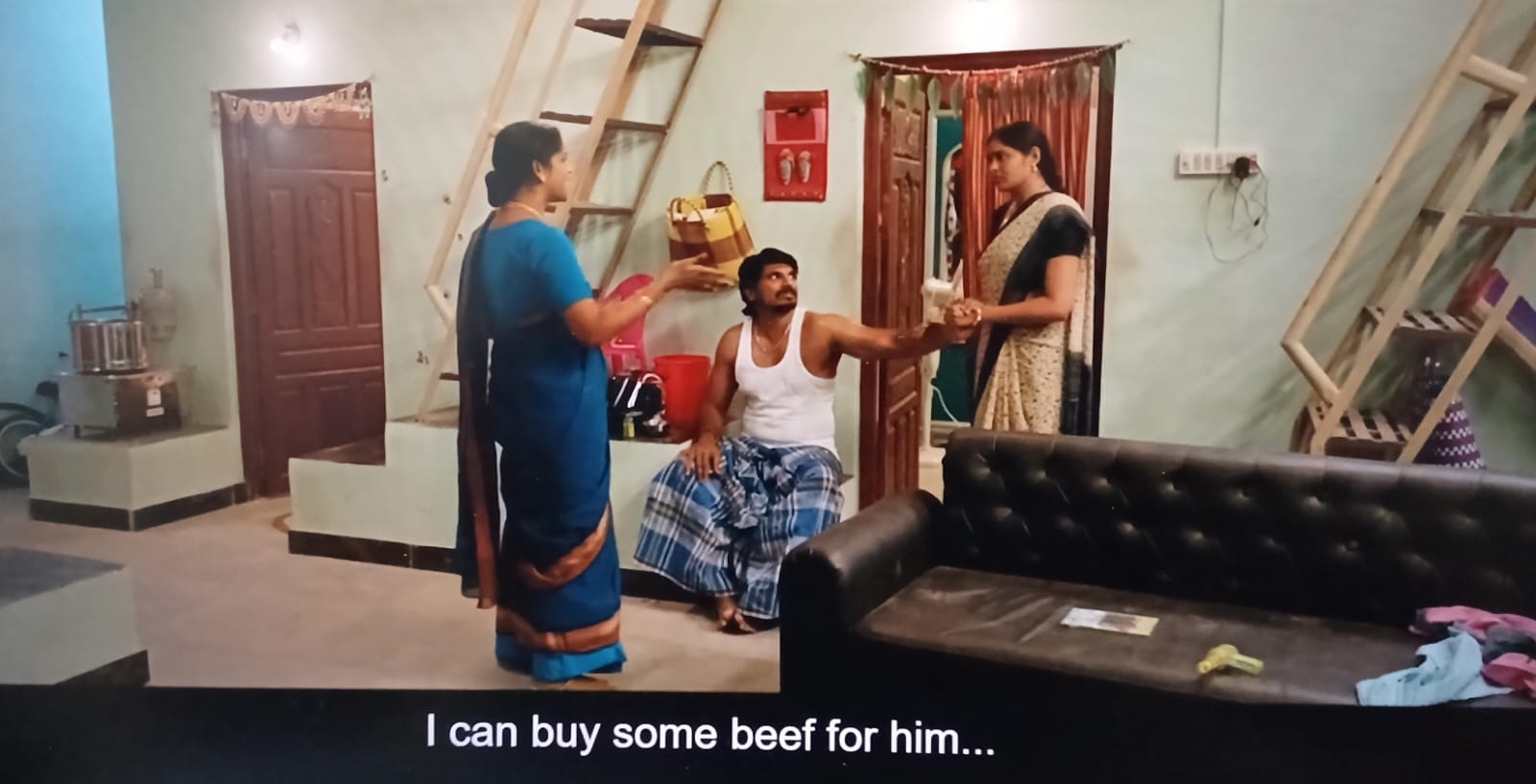
Choice of Names – Villain Hindus, Heroes Communists
The villains’ names are telling – the betraying slum dweller is a Hindu named Perumalsami. The brutal police antagonist is Pankaj Patel. The greedy politician is Vishnu Pai. Finally, the ultra-egoistic, power-hungry main villain is a practising Hindu named Haridev Abhyankar. Ranjith carefully chose these first and last names.
Contrast this choice with the names of people on the good side. Kaala, played by Rajinikanth, hails Lenin as a revolutionary. He even names his son after him.
Historically, Lenin’s revolution, the resulting civil war and famines, and the domestic repression that he led against dissidents and scapegoats directly led to the deaths of over 8 million citizens of the Russian Empire, many by starvation, torture, or summary execution. Yet the film freely employs Marxist symbology – notice the Hammer and Sickle in the animation flashback.
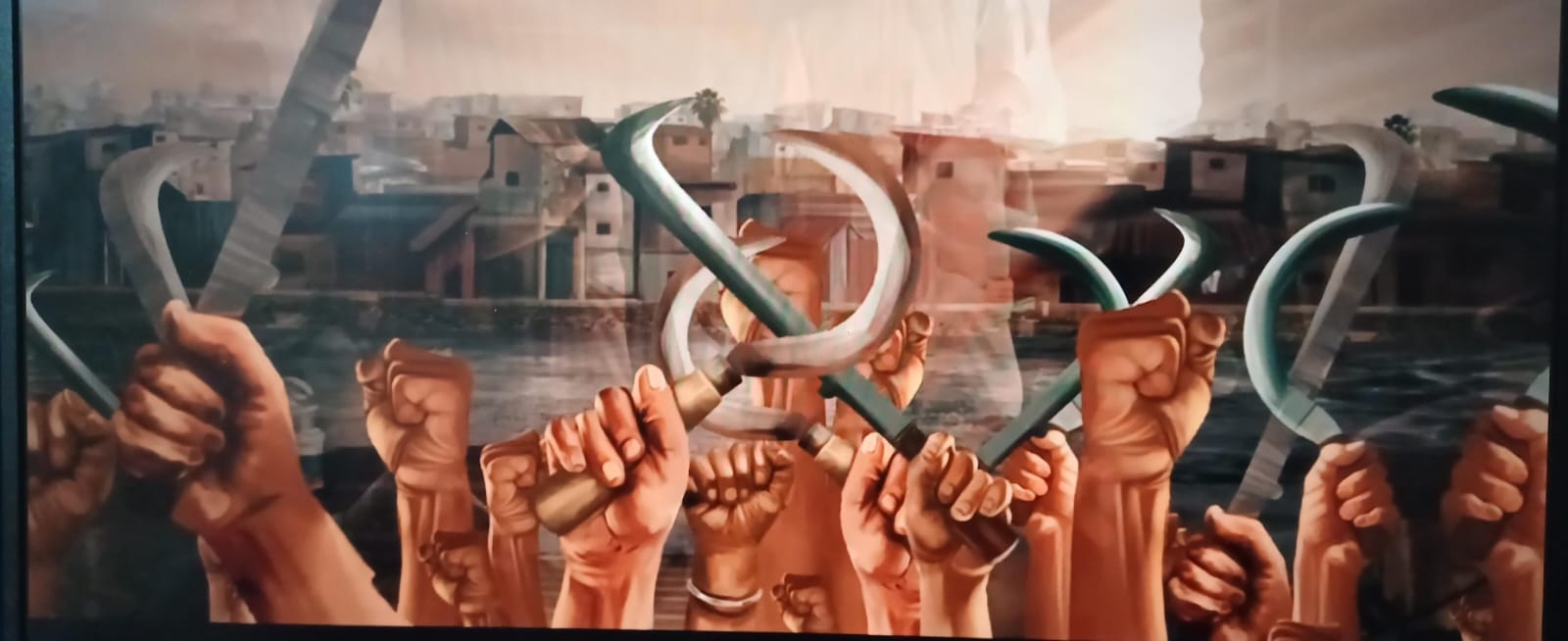
Even though these names have a subconscious influence of viewers, Ranjith is well within his rights to name his characters in Kaala as he deems it fit – as do other filmmakers. Politically, the bad side belongs to – Navbharat National Party (a proxy for BJP), wins all of Maharashtra except for Dharavi. Hari supports this party by speaking to people in a format titled ‘Dil Ki Awaaz’ (a proxy for Man Ki Baat).
Dig At Political Hindus
The good side belongs to the oppressed people’s Republic Party, which won the Dharavi elections. The area is an impregnable “Kaala Kila” that the nationalists cannot win over. The party’s flag is basically the tricolour Indian flag, with the saffron replaced by Blue.
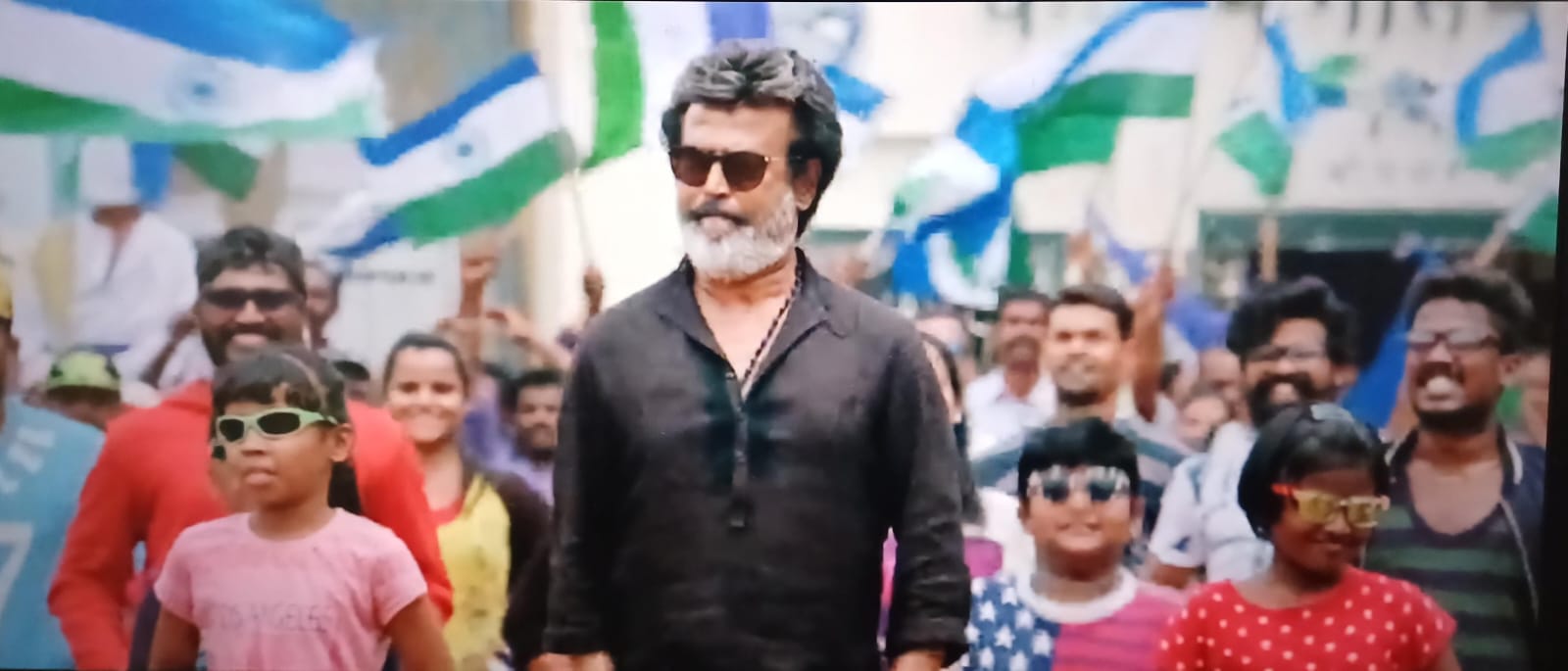
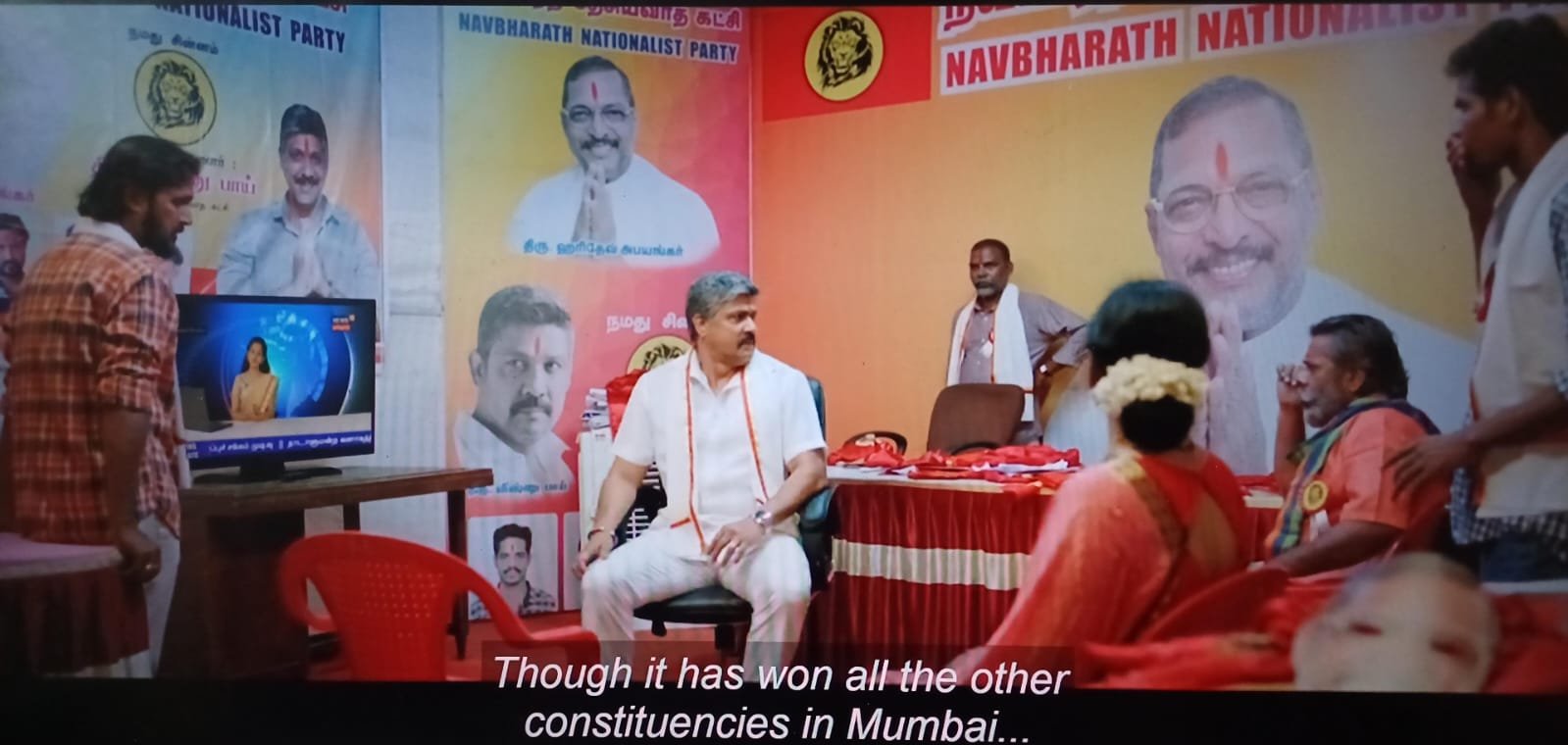
Where Ranjith overdoes his indulgence is in his display of brazen Hinduphobia. The evil builders who plan to steal the slum dweller’s land is ‘Manu Realty’ and they intend to rename Dharavi to Dandakaranya Nagar.
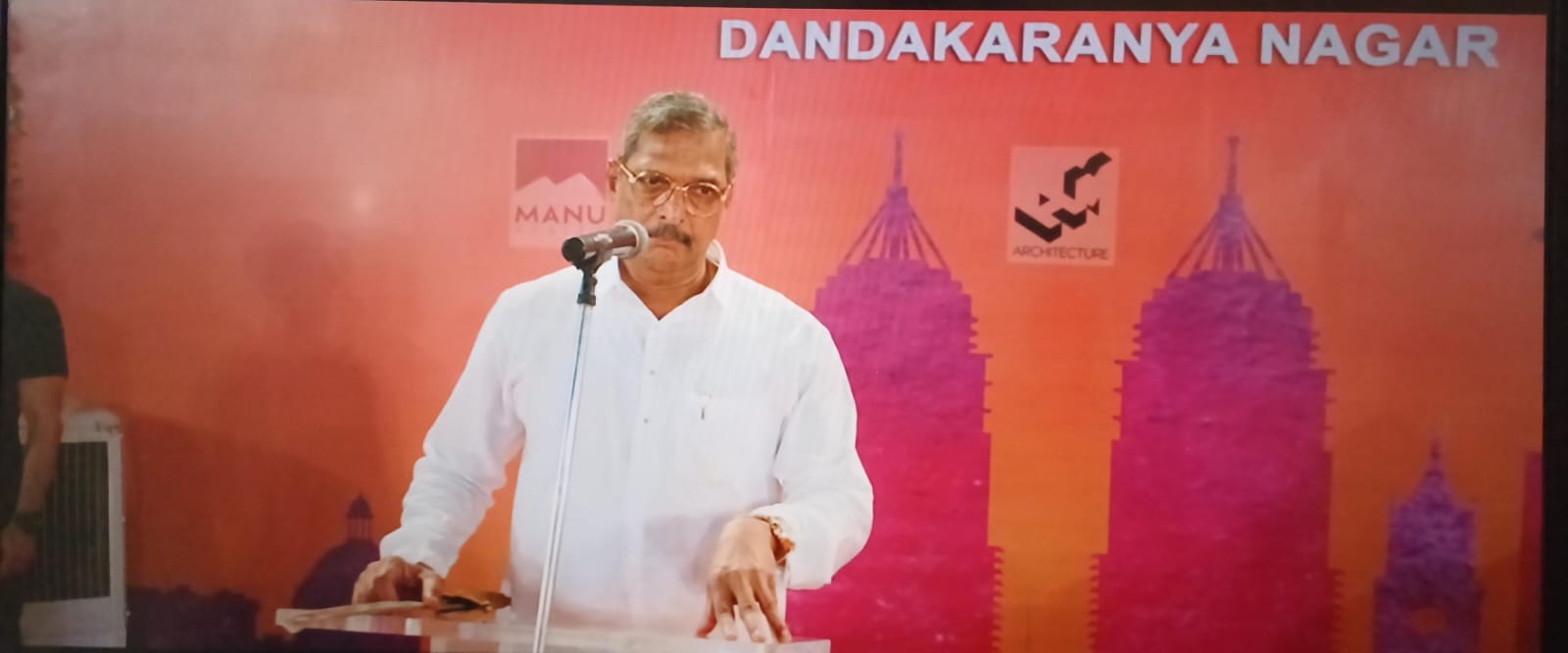
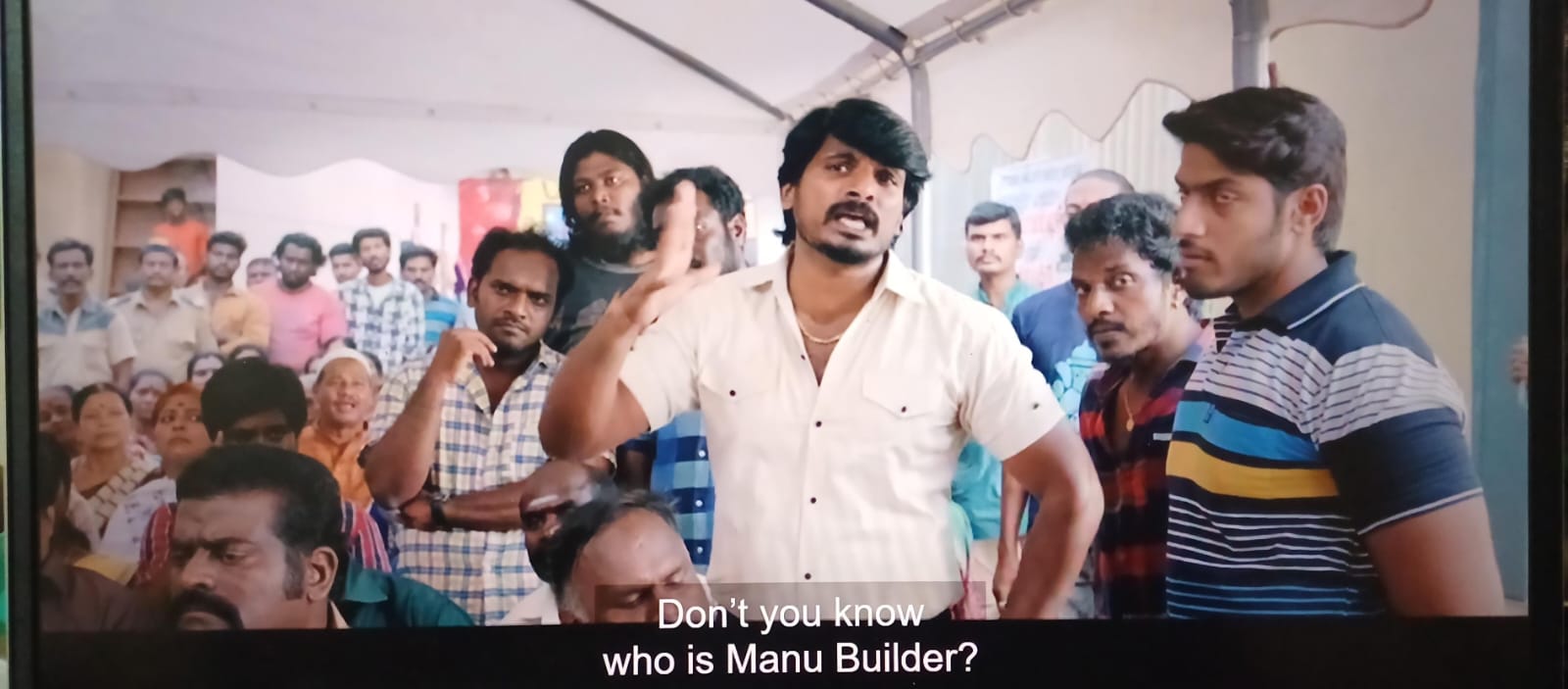
Kaala meets his aides at Bhagavan Gautam Buddha Vihar. His house is full of Buddha idols, and there are no visible Hindu idols. Kaala offers Dua in the local mosque. Yet he doesn’t partake in Ganesh Chaturthi and even uses the festival crowd to meet his ex-lover, Zareena, privately at her home.
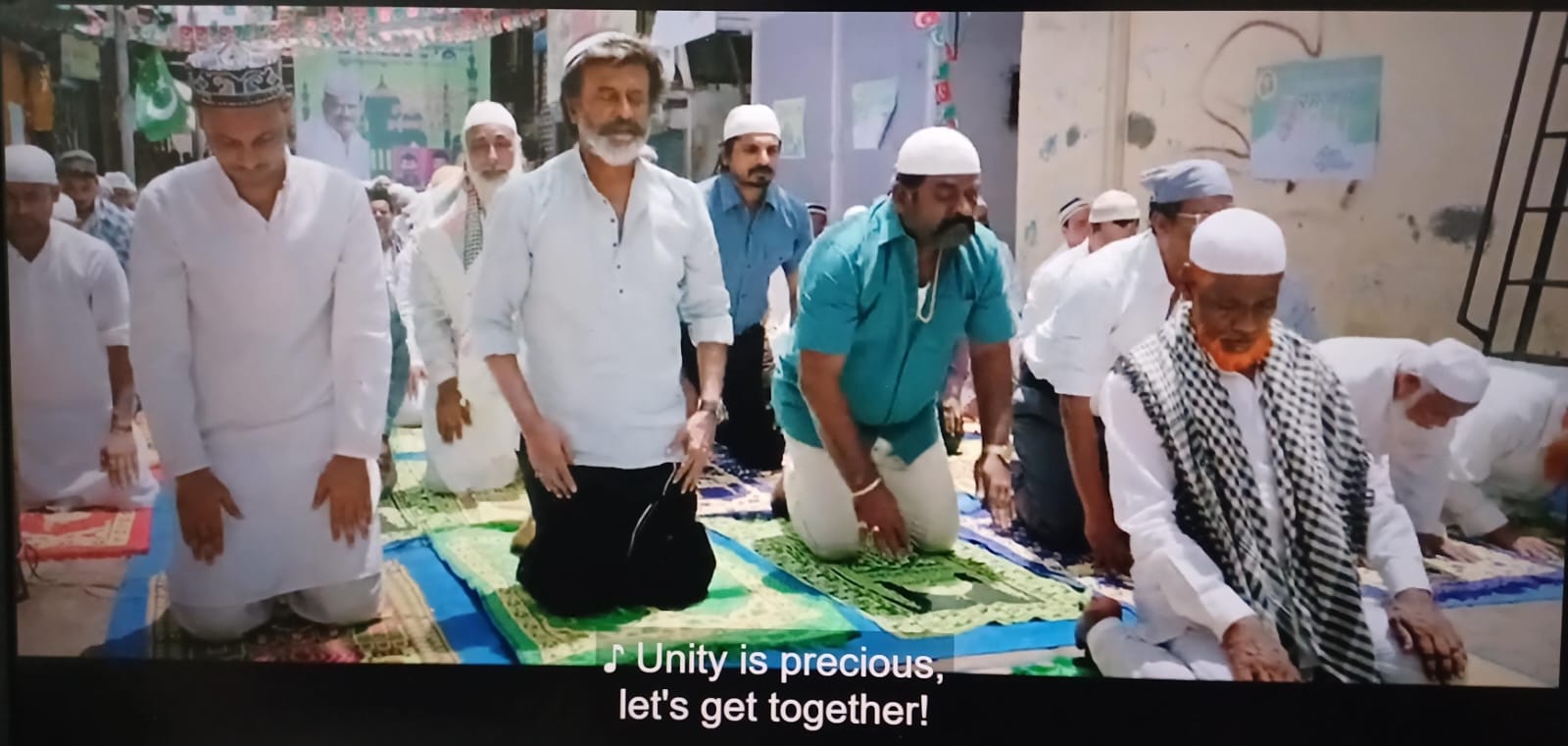
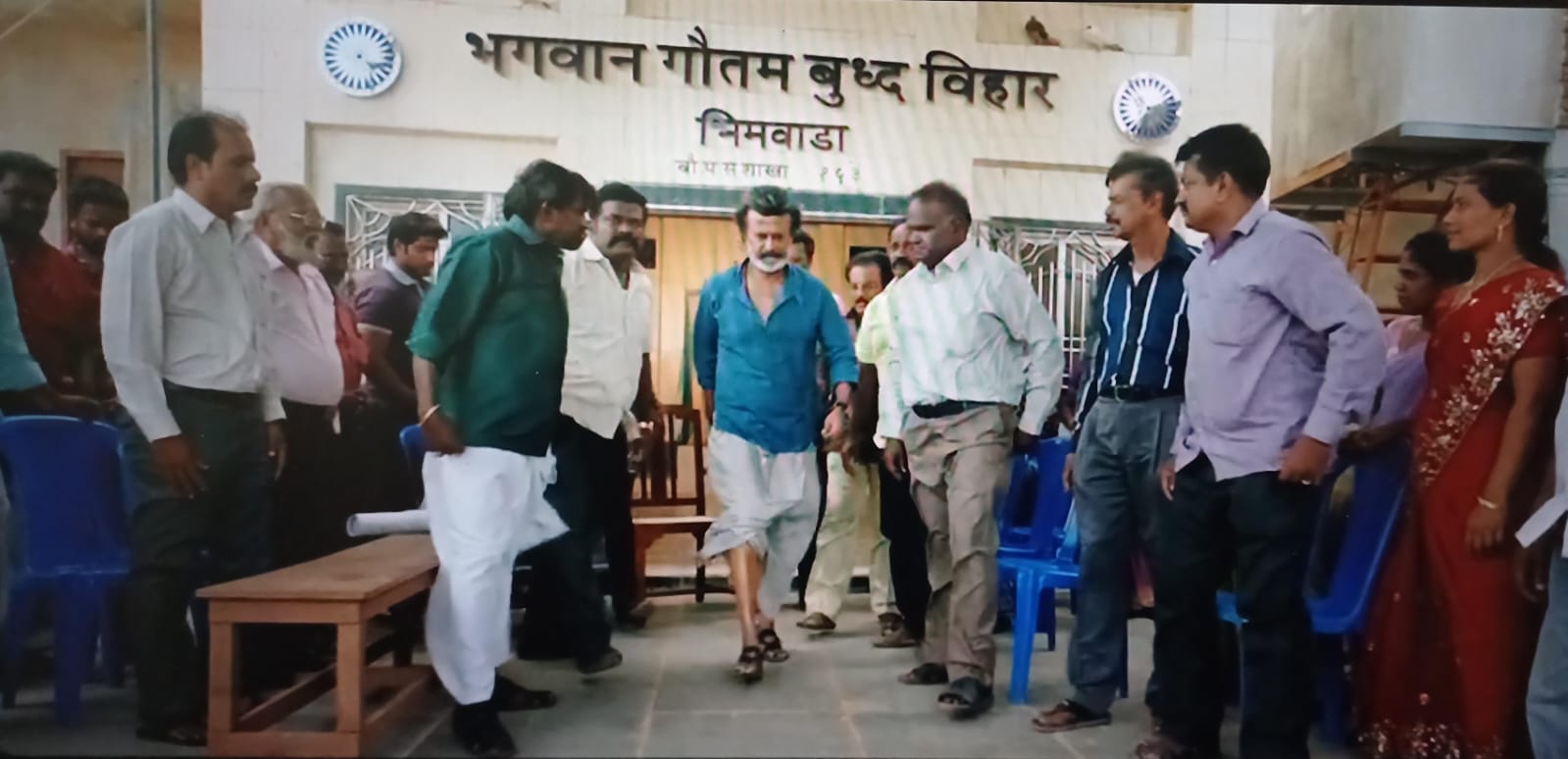
Hari Abhyankar (always adorned in white) is a devotee of Ram (notice the idol) and Krishna. He treats people based on some hierarchy—some must stand, some must sit on the floor, and guests must fall on his feet before leaving. He is also misogynistic and judges single mothers. In this single scene, the passionate Zareena and Lenin turn from the bad side to the good Kaala’s side. This is patchy writing.
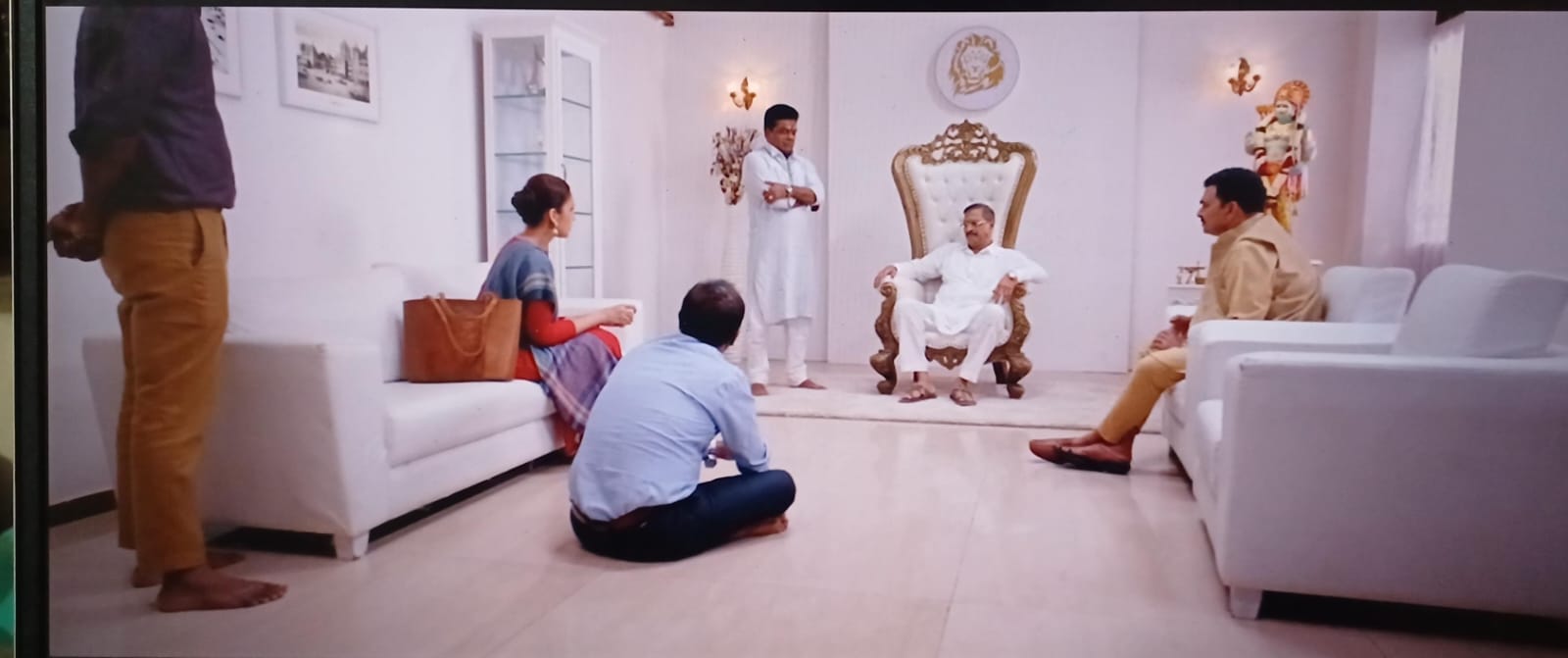
Ranjith considers shaking hands as equality and doesn’t like falling on anyone’s feet. But charan sparsh is not merely a Hindu tradition – it is Buddhist too. In Theravadin countries such as Sri Lanka, when one goes before one’s teacher, in order to “open one’s mind up to receive instructions,” one bows and recites the phrase, “Okāsa ahaṃ bhante vandāmi” (“I pay homage to you venerable sir”) Ranjith will now become pro-prostration as it is a Buddhist practice too?
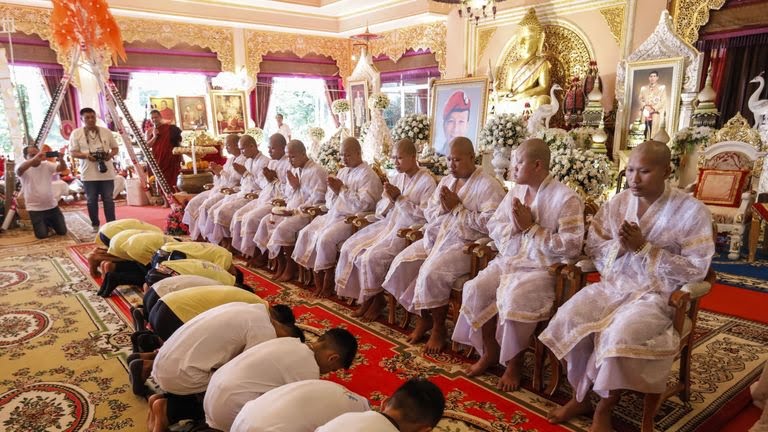
Kaala Extolls EVR
The irony is that Ranjith idolizes EVR in Kaala. The film shows an EVR chowk and statue in his Dharavi set piece. This film plot clearly shows how Ranjith has not read much of what EVR had to say about Ambedkar, questioning his integrity, the Keelvenmani massacre, etc.
His biggest Hinduphobic gesture compares the hero Kaala to Ravana and the villain to Ram. The book on Kaala’s desk is Raavana Kaaviyam, and Kaala is addressed as the leader of the Asura clan.
The climax is intercut with a Ramayana discourse organized at Hari Dada’s house while his men brutally massacre the innocent slum-dwellers of Dharavi who are compared to Ravana’s heads. As one head of Ravana falls, another rises. The great Hindu epic is used as a metaphor for their resistance with a role reversal.
The film offers no real solution to the redevelopment of Dharavi—Asia’s largest slum—except asking people to resist any efforts that may interfere with their landholding rights. Aspirations for a better life and more space for the urban poor are relegated to the side lines as minor points.
Why Kaala flopped?
The film largely romanticizes slums, poverty, and people’s existence in squalid conditions. Its lyrics question the need for any high-rise building.
The government must allot housing units fairly. It is crucial to oppose corruption in such allotment. But Rajinikanth in Kaala opposes the redevelopment plans themselves.
Under the guise of the core theme, a lot of Hinduphobic ideology was pushed into the film, which barely had any engagement quotient in the second half. Land rights for the urban poor are okay, but pushing Hinduphobia under this guise is not okay.
The film flopped due to lack of a proper story and engaging screenplay. It didn’t fail because scheming casteists plotted against Ranjith to boycott the film (even though the movie encourages protests). The film’s closing image has a blue flag with the Buddhist Chakra and the words “Jai Bheem” on top. Meanwhile, the camera relegates the tricolour to the sidelines. This is an indelible Kaala mark on Rajinikanth – the nationalist.
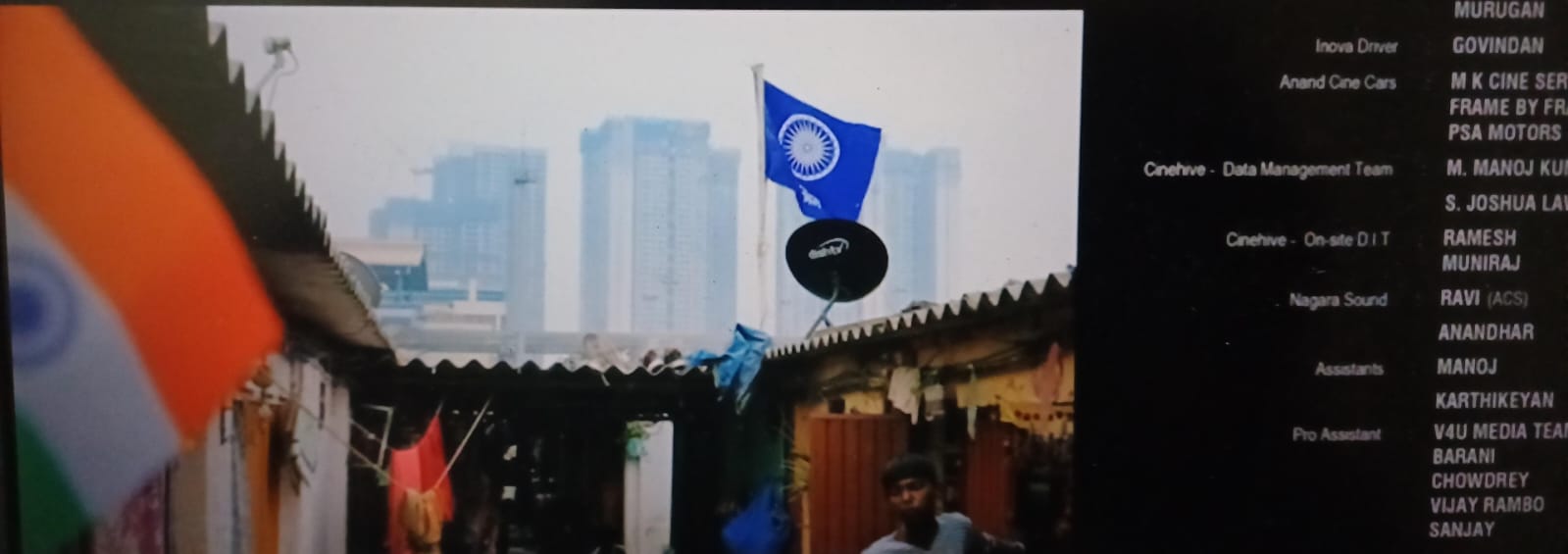
This article is based on a thread by Tamil Labs on the same topic.
Tamil Labs provide high quality Tamil Content written interestingly in English.
Subscribe to our Telegram, WhatsApp, and Instagram channels and get the best stories of the day delivered to you personally.



